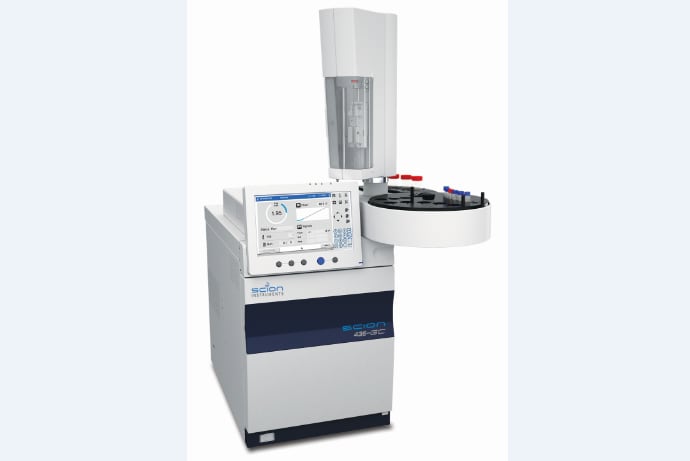The supplier of GC and GC-MS instruments and chromatography data systems has the 436 and 456 gas chromatography platforms and can configure systems with multiple columns, switching valves and temperature controlled ovens.
GC applications
The SCION SPT (Sample Pre-concentration Trap) can help chromatographers to perform low-level determinations in environmental to gas purity analysis.
Hans van den Heuvel, commercial director of Scion instruments, said SPT is a sample enrichment device.
“If you have a sample with concentrations that are too low to be analysed by a regular GC detector you use this system to enrich it,” he told FoodQualityNews.
“So what you do is you inject 100ml to trap the compounds of interest, heat it up very quickly at 40 degrees Celsius per second and you inject it into your GC so you can enrich your sample with a factor of 100, 200 or 300. Application areas are wide and include food.

“In food it is important you know the impurities, they can impact the taste, the smell and the product because some compounds you don’t want to have in your food.”
SPT is put into either 436 or 456 GC of Scion.
“It will be fully integrated as a trap but including a pump if you want to suck the sample through your trap and the flow controller to measure sample flow. Everything is part of the GC method so you know exactly the amount you sample on the trap.”
Space for the SP Trap depends on customer configuration of the instrument and numbers of injectors and detectors.
“It will take a few minutes – you sample the air so for example 25ml per minute so if you sample 100ml it will cost you four minutes on an analysis of 10 minutes but you get very low concentration levels compared to the alternative where you have thermal absorption which can take more time.”
Column ovens and carrier gas
Van den Heuvel said it tries to use capabilities in chromatography to speed up analysis.
“Where you go to smaller internal diameter columns, sometimes we combine two columns where we want to get rid of the matrix,” he said.
“The matrix means I have air, oxygen and nitrogen; I am not interested in the oxygen and nitrogen but I am interested in the impurities, my analysis can be disturbed by the oxygen and nitrogen.
“Quite often I am using two columns and I make a kind of heart cut to get rid of the air and only get the impurities and you can do that in any application area.”
There is one column oven in the instrument as standard but two additional column ovens can be added for faster analysis.
“In one column oven you run part of the sample identification and in the other column oven you run another part. If you put them all in the same column oven one column needs to start at 50 degrees and running 10 minutes and in the other one you inject what you need for a fast ramping,” said van den Heuvel.
“But if all is in one column oven you need to wait 10 minutes before you can start your ramping, when you split them you inject in this one, ramp immediately and save at least 10 minutes, so that is the reason to go for multiple column ovens.”
Van den Heuvel said it is common to use helium as carrier gas but a trend that started four or five years ago was people moved to hydrogen.
“The reason was a shortage on the world market and what happened was prices went up and availability. We had a lab at that time and were using five or six bottles per month so we were ordering them and we got a message from our supplier that we only get three,” he said.
“Labs switched during the weekend to nitrogen as a carrier gas and on Monday morning when they started measuring they switched back to helium or they switched to hydrogen. The benefit from hydrogen is you can make your own if you buy a hydrogen generator and it is fast, you save time.”
